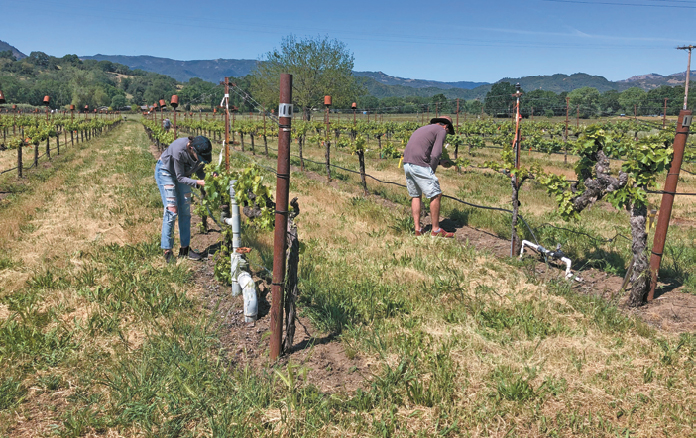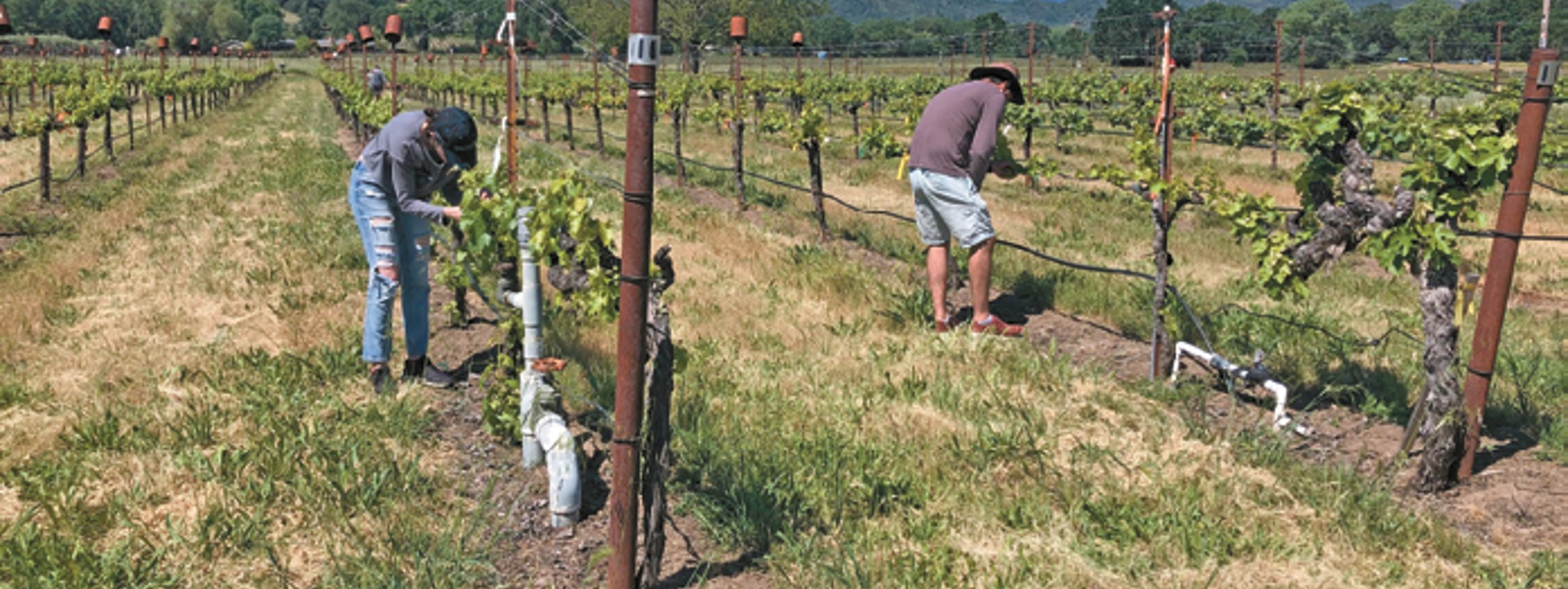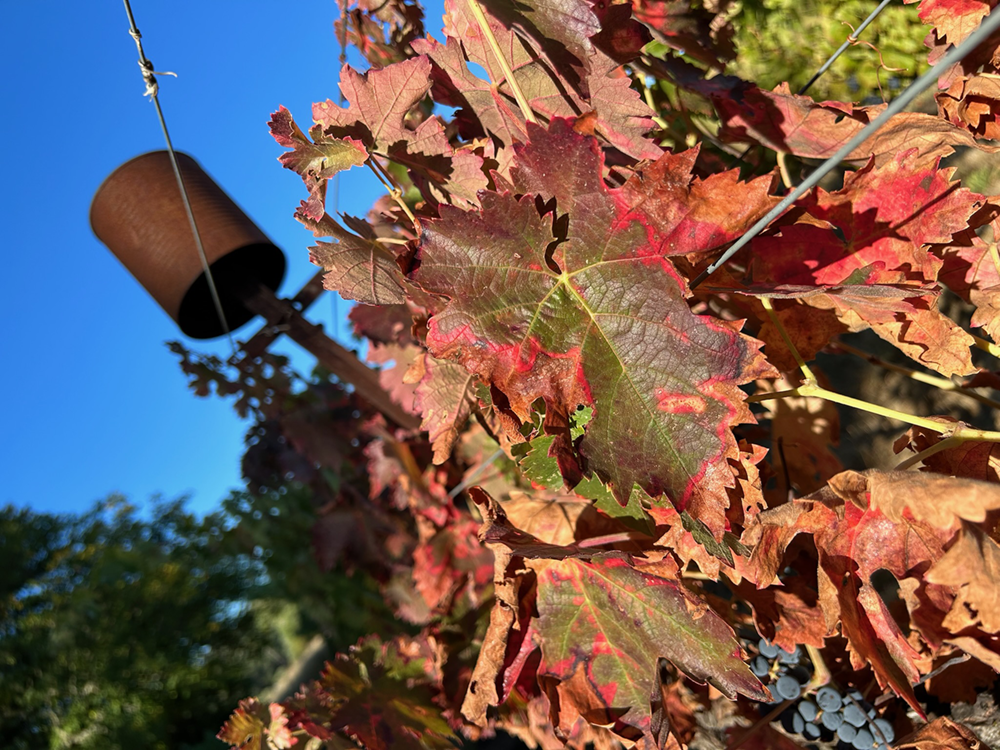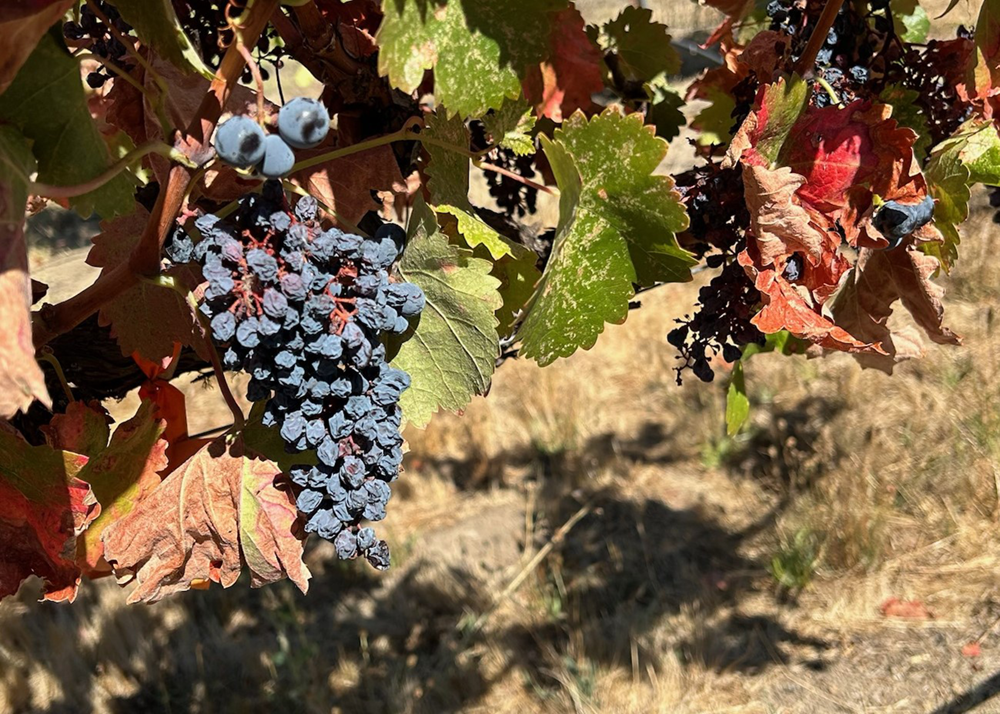Project seeks clues to stop a deadly vineyard disease

Team members at the University of California Hopland Research and Extension Center introduce the bacterium Xylella fastidiosa into grapevines as part of Pierce’s disease research.
Photo/University of California Hopland Research and Extension Center


Photo/University of California Hopland Research and Extension Center

Photo/University of California Hopland Research and Extension Center
By Dorsey Kindler
Ongoing research at an experimental vineyard in Mendocino County could reveal new methods for combating Pierce’s disease, regarded as the most persistent crop threat faced by California’s $3.6 billion winegrape industry.
Pierce’s disease is caused by the bacterium Xylella fastidiosa, which kills grapevines by blocking water movement within the plant. It is spread, or vectored, by different species of insects, most notably the glassy-winged sharpshooter. While there’s no known cure, infected vines sometimes improve, or rid themselves of the disease entirely, between growing seasons.
A study project at the University of California Hopland Research and Extension Center takes a closer look at this “overwinter recovery phenomenon.”
Overseen by UC Berkeley plant pathology professor Rodrigo Almeida and doctoral candidates Andrea Brown and Monica Donegan, the research started fieldwork in 2021 at a vineyard block planted with several Mediterranean winegrape varieties.
Donegan focuses on the effects of temperature on different strains of the Pierce’s disease bacterium, while Brown studies the immune processes of grapevines as they respond to the chill of winter. Their research indicates temperature seems to play a role in grapevines fending off the disease, which results in average annual crop losses estimated at $100 million in California.
The two-pronged study approach has already yielded new insights that could prove useful to growers, Brown said.
“Growers go in and pull up plants after they detect the disease, and that’s really expensive,” she said. “So, if after a cold winter, growers can wait a little with the hope that the plants recover, that could save them money down the line.”
Much of the research is funded by the California Pierce’s Disease/Glassy-Winged Sharpshooter Board, which is led by representatives from the winegrape industry in a shared mission to safeguard vineyards in the state.
The PD/GWSS Board announced $2.7 million in new funding for 15 research projects during the next three years. It will continue to fund eight previously approved multiyear projects.
“Thanks to the assessment and the initiative of the growers and our cooperation with federal, state and local entities, we have a fairly healthy pot of money that is able to be put towards research,” said Randy Heinzen, chair of the PD/GWSS Board.
Heinzen, president of Vineyard Professional Services in Paso Robles, is well aware of the danger that Pierce’s disease poses to growers.
He said for 130 years, California growers lived with the disease in the background. With introduction of the invasive glassy-winged sharpshooter as a vector in the late 20th century, things “really kicked into high gear.”
The glassy-winged sharpshooter is more destructive than the native California species of sharpshooter because it is able to feed on different parts of the grapevine and has the mobility to penetrate farther into vineyards.
Much of the control of Pierce’s disease involves the use of pesticides on insect vectors. As a result, Donegan said, decisions about whether it’s necessary to spray or when to spray could be informed by better research knowledge of how climate impacts grapevine recovery.
Donegan initiated her winegrape research by introducing two separate strains of Xylella fastidiosa—one from the warmer climate of Kern County and the other from the cooler North Coast region of Hopland. Starting in May 2021, she infected hundreds of vines composed of 13 separate cultivars, with a number of vines serving as uninfected control plants.
Questions, she said, were: “How does the disease progress with the different strains, and how does the disease progress with the different varieties?”
Donegan periodically took grapevine samples back to the lab for pathogen detection, using quantitative polymerase chain reaction analysis. The DNA measuring technology gave her a metric of how much bacteria was in the plant. She did symptom surveys at different points throughout the year, looking for scorching, berry shrivel and matchstick petioles in the vines.
Brown, who began work at the Hopland research site in the winter of 2022-23, designed a study to examine the overwinter recovery phenomenon of grapevines exposed to different amounts of cold in three separate locations: Hopland, Berkeley and the Blodgett Forest Research Station near Placerville. The Berkeley location had the warmest winter conditions, Placerville the coldest, with Hopland in between.
“I took plants out after they’d been infected in the greenhouse in October to these field sites and left them over the winter,” Brown said. “Then I brought different groups of grapevines back at different times during the winter.”
Temperature data loggers at each field site kept track of the cold exposure in each place, which gave Brown more data about recovery rate paired with cold exposure data. She repeated the experiment this past winter and might add a third winter for good measure.
One of the more definitive findings to date has come from Donegan’s research, which has demonstrated a marked difference in the ability of the separate strains of Xylella to survive cold winters. At the end of her study, about 10 of the 175 vines infected with the Kern County strain still tested positive, while only half of the vines infected with the Hopland strain managed to recover.
“The interesting thing is that people didn’t think that there would be much difference within this group of Xylella fastidiosa in California that infects grapevines,” Donegan said. “Phylogenetically, they are all very closely related to each other—meaning there’s not a lot of genetic variation.”
UC Berkeley has a long history of studying Pierce’s disease dating back at least 80 years, Almeida said. The research team doesn’t see the work ending any time soon.
“What I would hope,” Donnegan said, “is that (with) a lot of the research we produce, people in the lab continue to build on and drill down more into the mechanisms that we find.”
(Dorsey Kindler is a reporter in Butte County. He may be contacted at dorseykindler@gmail.com.)




